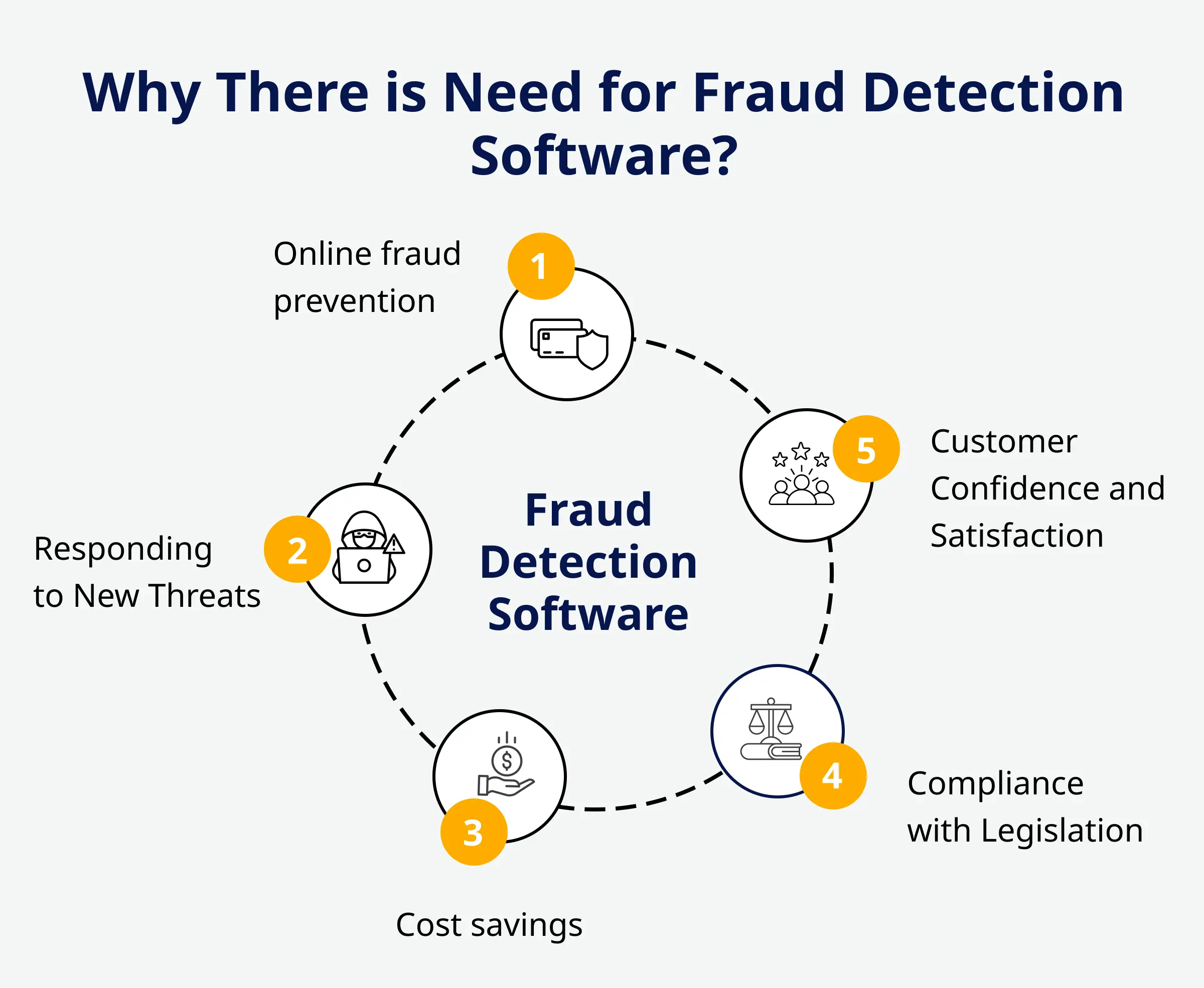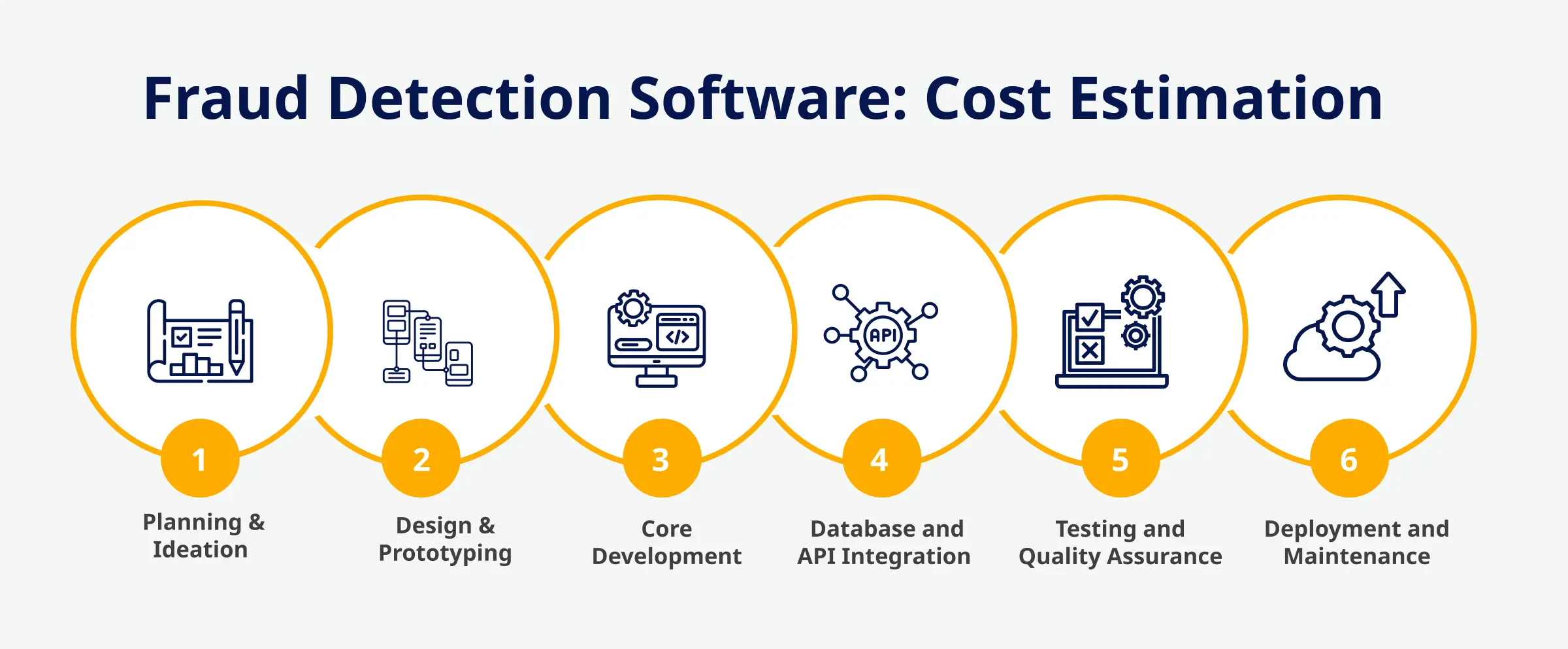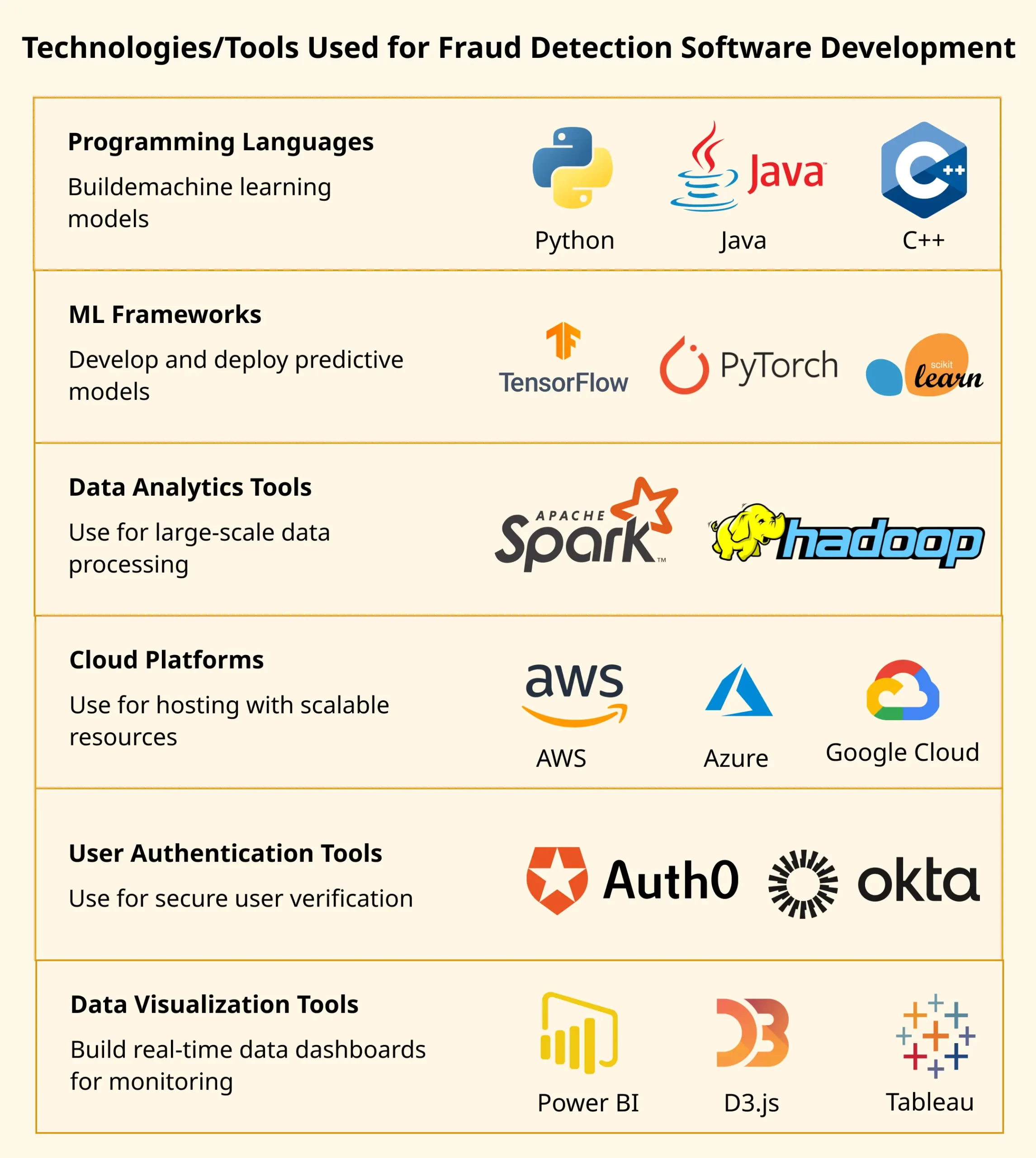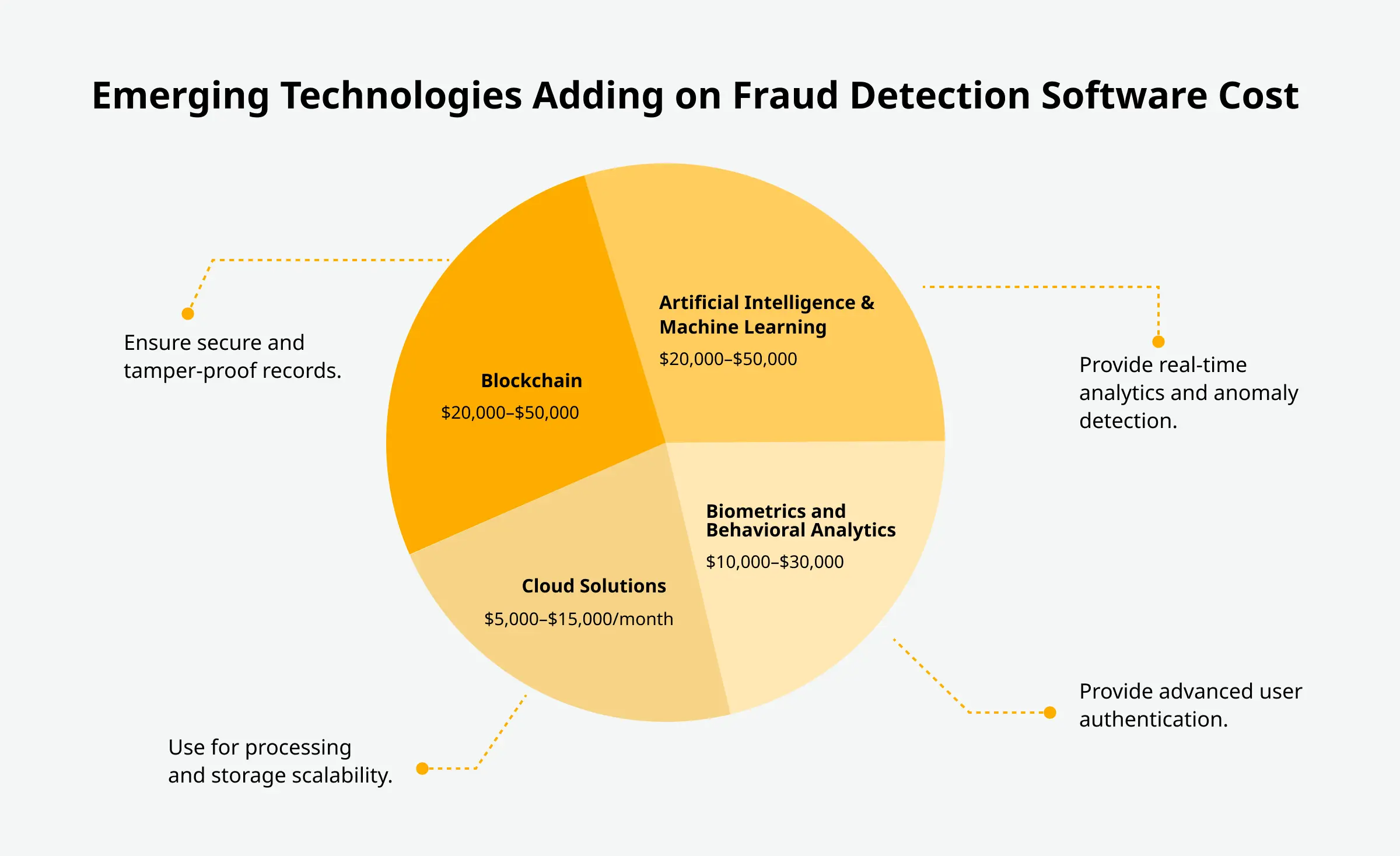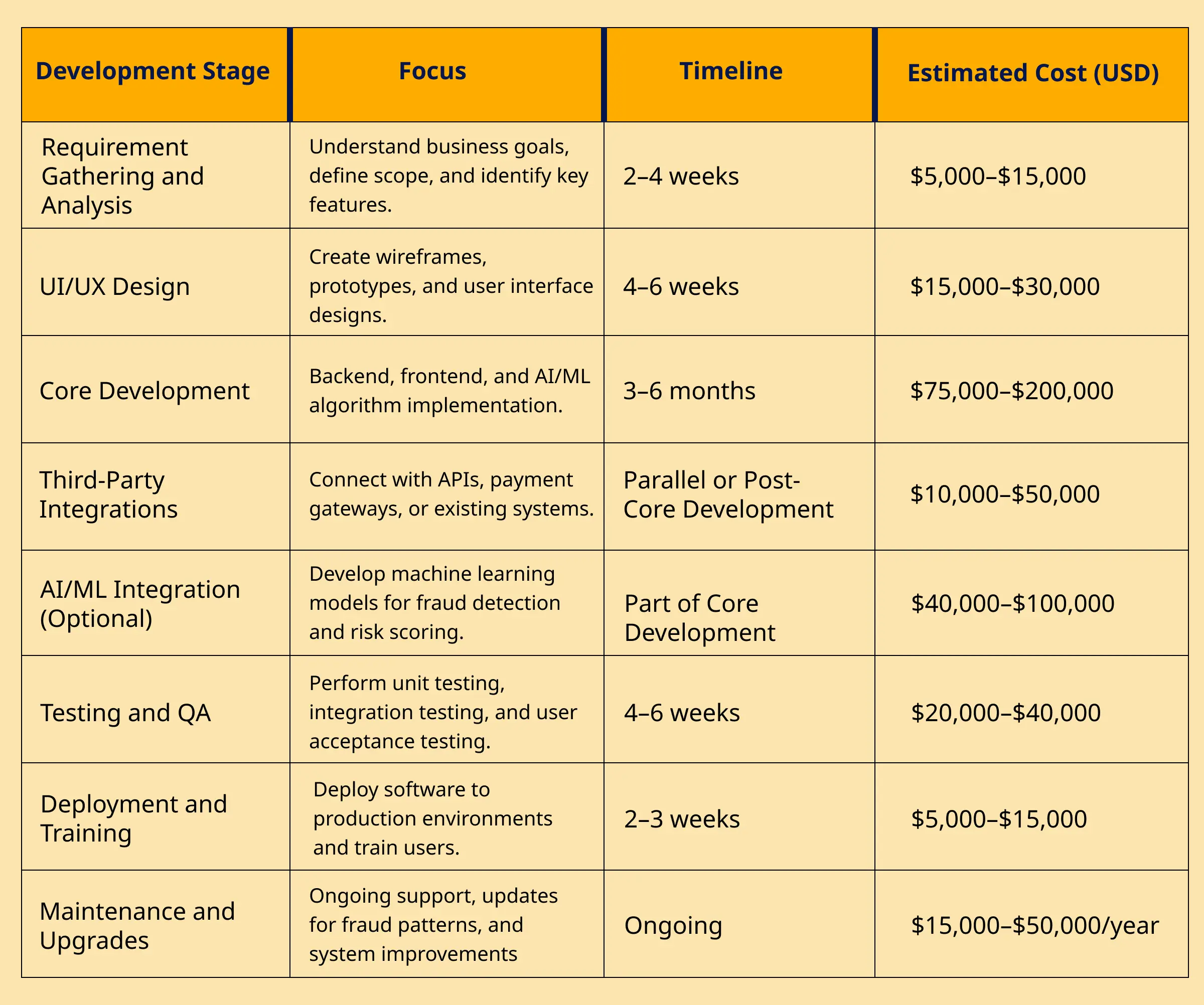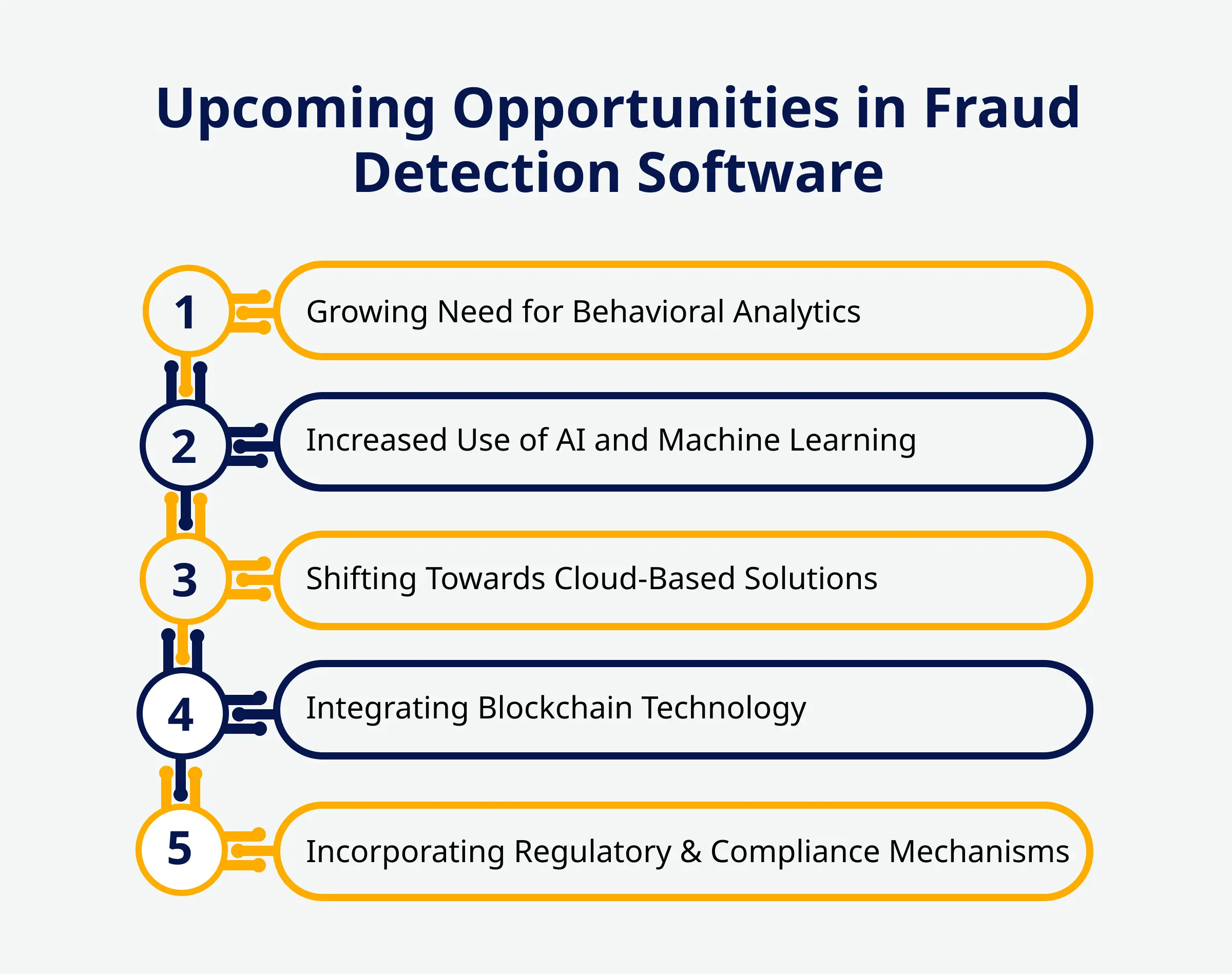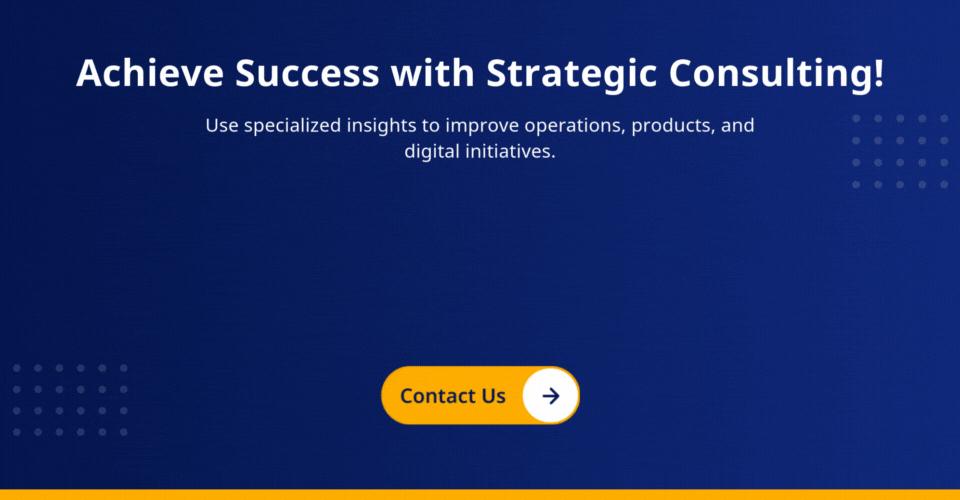2020 was the year we dealt with the COVID-19 pandemic. At that time, Amazon reported a significant threat of fraudulent activities as online sales surpassed approx $4.2 trillion. This led to various fraud schemes, such as phishing, account takeovers etc.
Seeing this incident, every business, from eCommerce to banks, has shifted its core focus towards stronger verification and authentication mechanisms. Here, you need a “robust fraud detection software” to prevent these frauds.
However, developing such software is not easy. It takes all your efforts and money to get the best one. Let’s explore all the factors that affect the fraud detection software cost before getting an approximate idea of the numbers.
Need for Fraud Detection Software
According to Grandsviewresearch analysis, the fraud detection market is expected to grow at a CAGR of 17.6% from 2023 to 2030. Therefore, many businesses in different industries want to build fraud app detection software.
Fraud detection software detects a wide range of fraudulent activities across various industries. Some key types of fraud include identity theft, transaction fraud, insurance fraud, and synthetic fraud.
Having fraud detection software is the need of the hour. Here’s why you need to know fraud detection software cost:
1. Online fraud prevention
Fraud detection software lets you watch, detect, and prevent fraud activities in real-time.
- Allow businesses to freeze unknown transactions before a significant loss occurs.
- Reduce the interference of human beings and provide quick responses.
2. Responding to New Threats
Advanced technologies like AI and ML enable fraud detection software to remain offensive to emerging tactics.
- Refine algorithms to know the patterns in fraudulent behavior.
- Remain protected from the dynamic threats.
Use our smart software to ensure compliance and precision in your claims.
3. Cost savings
You can avoid losing money by preventing fraud at the point of occurrence.
- Cost-effective way to reduce future risks
- Savings on penalties, chargebacks, and costs associated with legal disputes
4. Compliance with Legislation
Businesses in regulated banking and finance software development, healthcare, and e-commerce must adhere to stringent data protection and security laws.
- Automates compliance by monitoring transactions and generating real-time reports
- Keeps organizations in good books with regulatory authorities and away from penalties
5. Customer Confidence and Satisfaction
A secure transaction environment builds confidence amongst the customers.
- Provide a secure environment for sensitive customer information.
- Help a business have customer loyalty and long-term relationships and friendships.
Now that you know the various advantages of fraud app detection software, let’s examine the following companies that have successfully built fraud detection systems to protect their operations and customers.
Amazon
It is a big name in the eCommerce industry and has built its fraud detection system to tackle such issues. It uses AI-driven anomaly detection to monitor transactions and employs behavior analytics to detect unusual account behavior.
PayPal
It is a global leader in online payment systems and has invested heavily in fraud detection software to ensure secure transactions. The software identifies unusual patterns, including unknown geolocations and sudden transactions.
The wait is over now. We have provided a complete cost breakdown according to the software development stages.
Also Read: Top Data Engineering Companies to Watch in 2025
Cost Breakdown As Per Development Stages
Developing fraud detection software involves several stages. Each stage contributes to the overall pricing for fraud detection solutions. Below is a detailed breakdown of these stages with estimated costs:
Stage 1: Planning & Ideation
Estimated Cost: Approx. $5,000–$15,000
This is the initial stage, known as the discovery workshop. This stage helps understand business requirements, define workflows, and scope the project. Its deliverables include the following things:
- A clear plan of action
- Defined timelines
- Finalized technology stacks
Stage 2: Design & Prototyping
Estimated Cost: Approx. $10,000–$20,000
This stage mainly focuses on UX/UI development and mockups. Here, UI/UX designers ensure the software is user-friendly and visually appealing.
- Create interactive prototypes/mockups
- Visualize workflows and interfaces
Stage 3: Core Development
Estimated Cost: Approx. $50,000–$150,000
This phase is also considered the most extensive. Here, the software’s backend, frontend, and AI/ML models are built.
- Real-time monitoring features
- Fraud detection algorithms
- Data processing capabilities
Stage 4: Database and API Integration
Estimated Cost: Approx. $10,000–$30,000
Fraud detection software development often requires access to extensive datasets. It easily integrates with transaction processors, bank APIs, and identity verification services, ultimately affecting the overall cost of development.
- Integrates with external databases
- Integrates with payment gateways and third-party APIs
- Provide secure connections
Get a transparent cost breakdown for custom fraud detection software from us.
Stage 5: Testing and Quality Assurance
Estimated Cost: Approx. $10,000–$25,000
This stage ensures no legitimate transaction will happen as it could impact the user experience. The fraud development software cost includes the following aspects:
- Model validation
- Stress testing
- Security assessments
Stage 6: Deployment and Maintenance
Estimated Cost: Approx. $5,000–$15,000/month
Deployment using cloud computing solutions and next-gen tech integrations increases the overall fraud detection software cost. Cloud environments like AWS and Azure incur costs for the following aspects:
- Model retraining
- Hosting
- Updates
Factors Affecting Total Development Costs
Many factors impact the cost of fraud detection software. Each contributes to the complexity and scope of the project, which further determines the total investment required to build this software.
Here’s we have listed the key factors:
1. Tools/Technology Stack
The selection of technologies highly impacts the fraud detection software cost. The following technologies affect the total budget for fraud detection tools.
Machine Learning in Banking: Using advanced ML frameworks such as TensorFlow or PyTorch ensures robust real-time analysis.
Cloud Platforms: Hosting on AWS or Azure provides scalability and reliability.
Database: Choosing high-performance databases like MongoDB or PostgreSQL affects development and operational expenses.
Analytical Solutions: Financial Data analytics in fraud detection
2. Integration Needs
Integration with external systems is required for a complete fraud detection solution.
API Connections: The costs are incurred while connecting the software to payment gateways, identity verification systems, or customer management platforms.
External Databases: Secure third-party data sources integration for accurate and real-time detection but this requires extra configuration and testing.
3. Software Features
The complexity and scope of features directly affect the development time and costs.
Real-Time Monitoring & Alerts: It is a must for real-time detection and response to suspicious activities.
Multi-Channel Fraud Detection: It supports alerts through multiple channels, including email, SMS, and apps.
Dashboard and Analytics: An intuitive interface for monitoring fraud metrics and generating reports.
Scalability & Customization: Building software that scales with business growth and adapts to unique requirements increases development efforts.
4. Team Composition
The size and experience of the development team is one of the significant cost determinants.
Key Profiles: Front-end and back-end developers, AI/ML experts, UX/UI designers, project managers, and QA testers.
Specialists: Developers with special skills in fraud detection or financial systems charge high fees.
Partner with us to build fraud detection software in half the usual time.
5. Compliance and Security Standards
Compliance and security standards are of utmost importance in the finance and healthcare industries.
Regulatory Requirements: GDPR, PCI-DSS, HIPAA, and other regulations require certain steps to protect sensitive information.
Data Encryption: Strong encryption methods ensure data security but increase the overall development cost.
6. Geographic Location
Development costs vary greatly based on where the team is located.
North America: Usually charges the highest rates, approximately $100–$250/hour.
Europe: Mid-range costs, with Western Europe being more expensive than Eastern Europe.
Asia: It generally offers lower rates, approximately $30–$80/hour, while still delivering quality development.
Also Read: 5 Ways Advanced Threat Detection is Strengthening Cybersecurity
Timeframe for Fraud Detection Software Development
The time required to build fraud detection software depends on the complexity of the same while developing and the features to include. Here, we have provided a detailed overview of the timeline:
Basic Fraud Detection Software
Estimated time: (3-6 Months)
Basic fraud detection software uses simple rules-based algorithms and predefined criteria to identify suspicious activity. Such systems are easy and fast to develop because they use standard technologies and require little customization.
For example, if the requirement is to identify simple anomalies, such as unusual transaction patterns or login irregularities, then the development time can be estimated to be in the range of three to six months. This would include designing, coding, testing, and deploying the software.
Advanced Fraud Detection Software
Estimated Time: (6–12 Months or More)
An advanced system uses AI or ML, so the time frame leaps to a higher level. Such systems are not only very data intensive but also require complex training machines to learn fraud patterns.
These systems often require rigorous testing to ensure they do not produce false positives, so the development period may range from six months to a year or longer. This also depends on the availability of training data, team competence, and the scope of functionality.
Overall, the timeline of fraud detection software development depends completely on your business’s requirements, technical complexity, and available resources. You may also hire the right developers to build this software.
Strategies to Optimize Fraud Detection Software Cost
Building fraud detection software is a wise investment. But, businesses must know the specific and cost-effective strategies to manage their expenses. This would not only ensure high-quality software but also cater to faster time-to-market.
Here are some practical ways to optimize development costs:
1. Focus on MVP Development Initially
Start with a Minimum Viable Product with only the essential functionalities to identify and prevent fraud. This method enables companies to test the software in actual conditions and obtain users’ views before investing further in additional features.
Companies can minimize development costs and initial development time by targeting components like real-time transaction monitoring and simple reporting.
2. Utilize Cloud Solutions
The scalability of a cloud platform such as AWS, Google Cloud, or Microsoft Azure removes the need for expensive on-premise infrastructure. Cloud services operate on a pay-as-you-go model, allowing businesses to manage their costs based on usage and scale resources as needed.
Moreover, cloud platforms often have built-in data storage, processing, and analytics functionalities, reducing development overhead and costs.
3. Use Existing APIs and Frameworks
Using pre-built APIs and frameworks can significantly reduce development time and costs. Some examples include payment gateway APIs for transaction data, identity verification APIs for user authentication, and fraud detection libraries for pattern analysis.
Open-source frameworks and tools, like TensorFlow in machine learning solutions or D3.js in data visualization, allow for reliable and cost-effective solutions that accelerate development.
Avoid costly rejections and improve reimbursement efficiency with our software expertise.
Future Trends/Opportunities in Fraud Detection Software
Fraud detection software is going to keep pace with increasingly sophisticated threats. As technology advances, several key trends and opportunities are shaping the future of this industry, as listed below:
1. Growing Need for Behavioral Analytics
Fraud detection is evolving from simple rules-based systems to advanced behavioral analytics. These new systems can detect real-time anomaly based on user behavior patterns, such as spending, device usage, and login time.
2. Increased Use of AI and Machine Learning
AI and ML in banking and insurance allow systems to discover patterns of fraud that are hard for traditional methods to detect. Through ML models, systems learn continuously from new data, making fraud detection faster and more accurate.
3. Shifting Towards Cloud-Based Solutions
Cloud-based fraud detection solutions are gaining momentum with the advancement of remote work and global business activities. Such solutions enable real-time monitoring, flexibility, and scalability to keep up with changes in the fraud landscape.
4. Integrating Blockchain Technology
Blockchain, in fraud detection, can minimize fraudulent activities by keeping immutable records of transactions. It utilizes decentralized validation processes in financial services, supply chain management, and identity verification.
5. Incorporating Regulatory & Compliance Mechanisms
Modern systems need to provide fraud detection and adherence to data privacy laws, industry standards, and government regulations. This helps an organization protect its operations from fraudsters while avoiding legal repercussions.
How ValueCoders Can Help You Gain a Competitive Edge in the Fraud Detection Market?
ValueCoders is a leading software development company in India. We provide tailored software solutions to help our clients to gain a competitive edge. Let’s look at our expertise given below:
1. Years of Experience: Being established in 2004, we have served global clients and has 20+ years of experience in delivering quality solutions.
2. Use explainable AI: We offer great transparency and enhance trust by using models that explain why a transaction was flagged red during scrutiny.
3. Niche market focus: Our software development experts specialize in building anomaly detection systems and providing highly innovative solutions for specific industries.
4. Proactive threat intelligence: We help you develop fraud detection software incorporating threat intelligence feeds that provide real-time updates on fraud tactics.
5. Awards & Recognitions: We have achieved recognition from top Fortune 500 companies, such as Clutch and Goodfirms. Our list of clients includes HelloPeter, Spinny, DubaiPolic, Infosys, and many more.
By partnering with us, you gain access to a team of seasoned professionals committed to delivering excellence through innovative and cost-effective fraud detection solutions.
Final Thoughts
Building fraud detection software is a financial investment and a strategic step. It helps protect your business from data breaches, gain customer trust, and be in advance of changing threats.
Even though the price may vary with features, technology, and development needs, the long-term benefits are far beyond the costs. Now is the time to take action, protect your assets, and fortify your business for the future.
We at ValueCoders (a leading fintech software development company in India) are always ready to help you develop fraud detection software. Contact us if you are looking to invest in such solutions.

